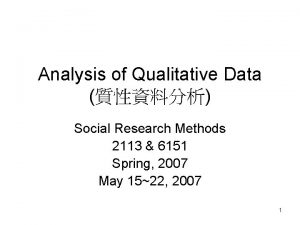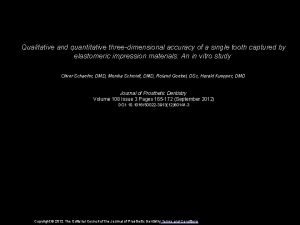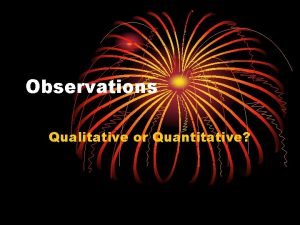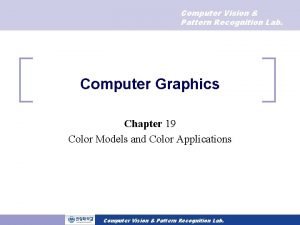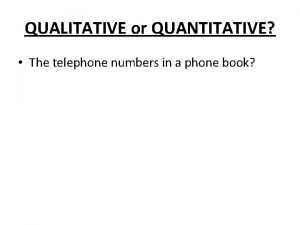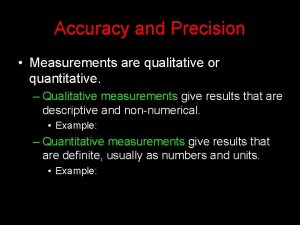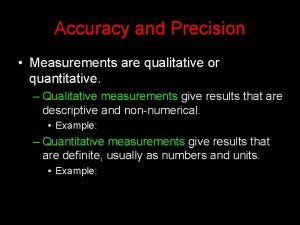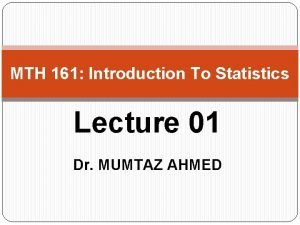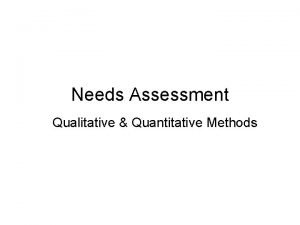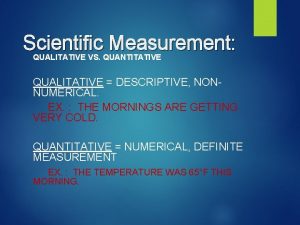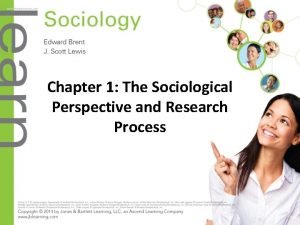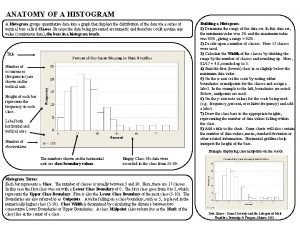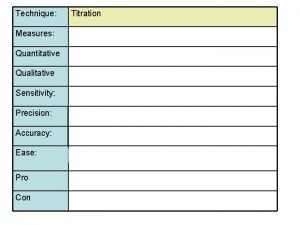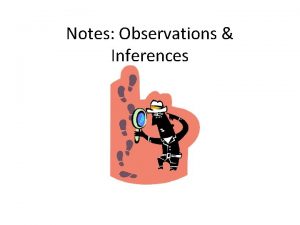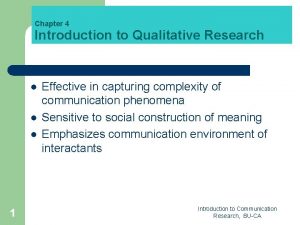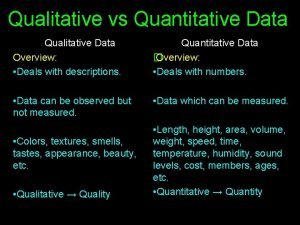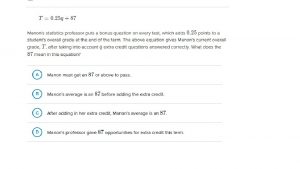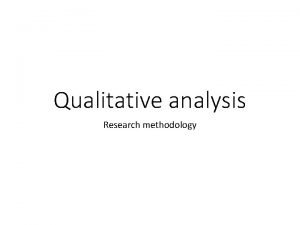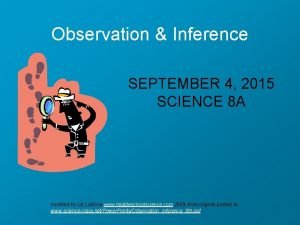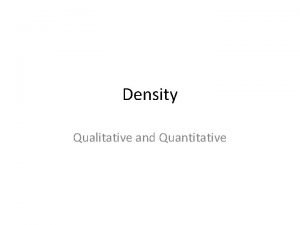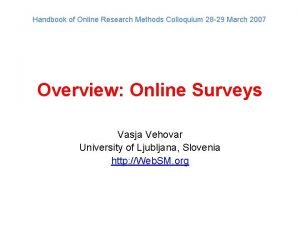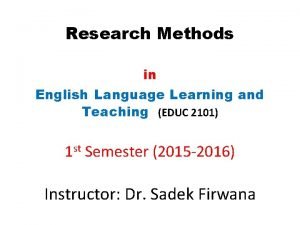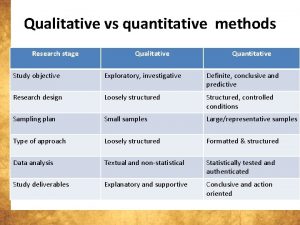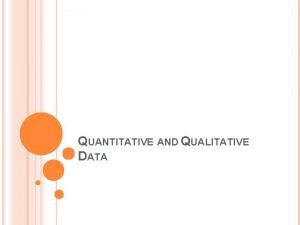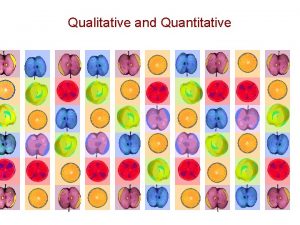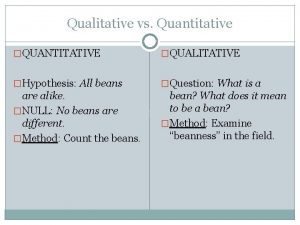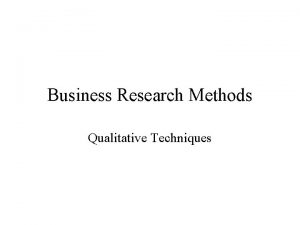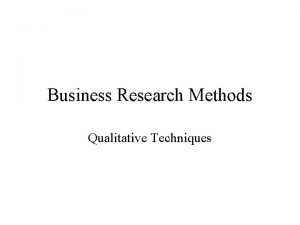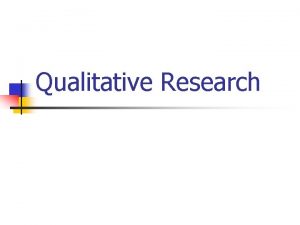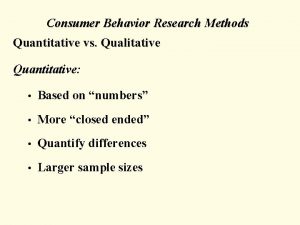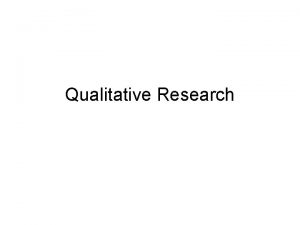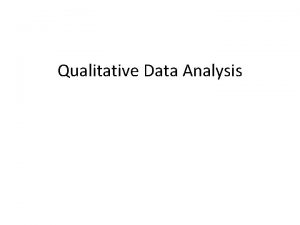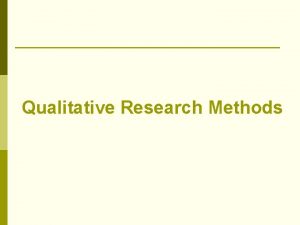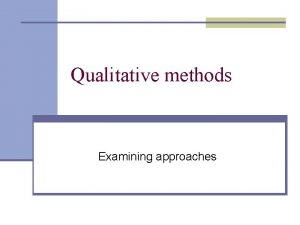Methodology Quantitative Methods Qualitative Methods What is the




















































































- Slides: 84

Methodology Quantitative Methods Qualitative Methods

What is the difference? • Quantitative Methods (Experiment) – Can you quantify it? – Narrow concepts to conduct statistical analysis – Experiments • All about numbers after manipulation • Qualitative – Quality in data (interviews, surveys) • Thoughts, feeling and perceptions • Eclectic Approach – Quantitative and Qualitative approaches

Quantitative Research • Experimental Studies with Controls • Uses scientific method – Hypothesis – Independent Variable – Dependent Variable

Psychology Experiment (Mozart Effect) • Variable – IV: conditions altered or varied by experimenter. Suspected causes for difference in behavior • Music – DV: measures results. Shows the effects that the IV have on behavior. • Math Score – Extraneous Variables: other conditions the researcher wishes to prevent • Groups – Experimental Group: exposure to IV • Music – Control Group: NO IV but all other variables • No music

Make you own hypothesis… • A hypothesis contains the following items – Variable being altered by experimenter – Behavior prediction • Example – Gum chewing during a math test will increase test scores. – If a participant holds a heavier weight prior to weight prediction of another item, the participant will predict that the item weighs more.

Experimental Control • Random Assignment – Equal chance of being in control or experimental group – Balances differences in the two groups • How do you limit extraneous variables – Make all conditions the same for each group EXCEPT the IV

Placebo Effects • Definition: inactive substance given in place of a drug in research. – Treat a patient by suggestion • Effect: changes in behavior due to expectations • Controlling Placebo Effects – Single-blind: patient does not know – Double-blind: patient and experimenter do not know • Example: 50% of the effectiveness from antidepressants are from placebo

Experimenter Effects • Single-Blind Study – May contain bias • Experimenter Effects – Unintended changes in participant behavior due to cues inadvertently given by the experimenter • Double-blind study • Limits bias and effect

Qualitative Research • Descriptive Research – Examples • • • Naturalistic Observation Correlational studies Case Study Survey Method Meta analysis (Theoretical Foundation)

Naturalistic Observation • Observing behavior in a natural setting – Typical environment where an animal/person lives – Jane Goodall in Tanzania • Ape uses a tool • Same as a Zoo? – NO • Limitations – Observer Effect: changes in behavior caused by an observer – Observer Bias: observers see what they want to see – Anthropomorphic Fallacy: attributing human thoughts, feelings and motives to animals

Correlational Studies • Correlated: linked together in an orderly way – Study: finds a degree of relationship between two traits, behaviors or events • Correlation Coefficients – Degree of strength • +1. 00 and – 1. 00 – Positive: +1. 00 Perfect relationship • Correlation does not show Causation!!!!

Clinical Method • Case Study: in-depth focus on a single subject – Natural clinical tests provide data • Answers interesting questions – Ethical guidelines don’t matter • Limitation – Little or no control is possible – No control group – Single case may be misleading

Survey Method • Can you ask everyone in the world questions pertaining to your research? – NO • Definition: public polling used to answer psychological questions • Sampling – Representative sample: small group representing a large group – Population: people belonging to a group • Limitations – Using psych students okay? – MUST have representative samples – Courtesy Bias: give “polite” or socially desirable answers

Meta-Analysis • More than a 100 studies are done on the same key concept – So how do you get through all the data? • Two Types – Research = Meta Analysis – Own Research = analyze in relation to meta analysis

• Triangulation – Definition - When studying human behavior, more than one method or approach is used – There are 4 different types of triangulation • Data Triangulation – Involves using different times, locations and participants • Observer Triangulation – Using more than one observer in the study • Methodological triangulation – Using a variety of qualitative and quantitative research methods • Theory triangulation – Using more than one perspective to understand human behavior

Triangulation…(continued) • Advantages – Qualitative research • broader inferences • Broader indications – Increases the likelihood of the use of qualitative research • multiple methods and perspectives used

Triangulation…(continued) • Disadvantages – Too simplistic – Confusing • Too many approaches • Too many methods

Interviews • These are the six types of interviews 1. 2. 3. 4. 5. 6. Email and Telephone One to one Conversational Structured Semi-structured Focus Groups

Problems With Methodology When evaluating theory and research, is the BIG FOUR!!!

Evolution • In the beginning… – Qualitative (introspection and psychoanalysis) • Behaviorism and the “black box” – If you cannot observe it directly and objectively, it could not be scientifically studied. – Reject all other perspectives • Inadequate and unscientific

• Cognitivists… yes you can • Behaviorist legacy – Only numerical results were scientific • BUT… what do those numbers mean? – Interpretation • Protocol Analysis: the way participants were thinking during research • New emphasis on human meaning and experience – Ethical issues • Today… both methods are used and accepted

Evaluating Research 1. 2. 3. 4. 5. 6. Sampling Random Sampling Demand characteristics Researcher bias/expectancy Cultural bias Gender Bias

Sampling • Population – Definition: set of research participants – Representative sample of typical population • Group size – Small size may have distorted data • Individual differences are more noticeable – Large, good, thousands

Random Sampling • Definition – Everyone in the population has an equal chance of being selected • Opportunity sample… most widely used – BUT…open to bias and distortion • Sampling bias – Undergraduate students represent general population?

Demand Characteristics • Validity issues – Does it measure what it is supposed to? • Humans are treated like subjects and the only thing different is the variable – Is it? • Martin Orne (1962) – People act differently in a psychological experiment • Overly cooperative • Lacks ecological validity + cultural biases

Researcher Bias • Self-fulfilling prophecy and expectancy effect – Pick up small, nonverbal cues • Expectancy Effect in analyzing data

Problems of Gender Research • Begins with biased assumption – Males are more intelligent • Fails to questions assumption • Asking questions based on assumption • Misinterpretation and failure to question when results contradict assumptions • Sex biology • Gender Culture (similar arguments)

What is culture? • Culture, Ethnicity, Nationality? • Defined as… – Shared rules that govern the behavior of members – Set of values, beliefs and attitudes shared by most

Cultural Bias • Interpretation of data is/could be different between the cultures – WHY? The subjects interpretation of the question/topic may be different

Types of Cultures • Collectivist – define themselves in terms of their relationships with others – more inclined to give up their individual needs • conflict between their needs and group needs – Emphasis on “in-group” • Individualistic – define themselves as autonomous entities independent of a group • People in this group tend to be more competitive

Problems with the study of Culture 1. Methods and Sampling – – Questionnaires/surveys language representativeness and attitudes 2. Interpretation – – Interpretation in light of culture Example: Circumcision 3. Stereotyping – Pre-existing stereotypes impact interpretation 4. Reitification of culture – – Avoid circular reasoning STOP Regard intangible processes (feelings) as literal objects

Ethical guidelines 1. 2. 3. 4. 5. 6. 7. 8. 9. 10. Do no harm Accurately describe risks Ensure voluntary participation Minimize discomfort Maintain confidentiality Do no unnecessarily invade privacy Use deception wisely Debrief (remove misconceptions) Provide results and interpretations (Debrief) Treat participants with dignity and respect

Ethics #1 • Explain why the following research is unethical.

• The Monster Study was a stuttering experiment on 22 orphan children in Davenport, Iowa, in 1939 conducted by Wendell Johnson at the University of Iowa. Johnson chose one of his graduate students, Mary Tudor, to conduct the experiment and he supervised her research. After placing the children in control and experimental groups, Tudor gave positive speech therapy to half of the children, praising the fluency of their speech, and negative speech therapy to the other half, belittling the children for every speech imperfection and telling them they were stutterers. Many of the normal speaking orphan children who received negative therapy in the experiment suffered negative psychological effects and some retained speech problems during the course of their life. Dubbed “The Monster Study” by some of Johnson’s peers who were horrified that he would experiment on orphan children to prove a theory, the experiment was kept hidden for fear Johnson’s reputation would be tarnished in the wake of human experiments conducted by the Nazis during World War II. The University of Iowa publicly apologized for the Monster Study in 2001.

Ethics #2

• South Africa’s apartheid army forced white lesbian and gay soldiers to undergo ’sex-change’ operations in the 1970’s and the 1980’s, and submitted many to chemical castration, electric shock, and other unethical medical experiments. Although the exact number is not known, former apartheid army surgeons estimate that as many as 900 forced ’sexual reassignment’ operations may have been performed between 1971 and 1989 at military hospitals, as part of a top-secret program to root out homosexuality from the service. • Army psychiatrists aided by chaplains aggressively ferreted out suspected homosexuals from the armed forces, sending them discretely to military psychiatric units, chiefly ward 22 of 1 Military Hospital at Voortrekkerhoogte, near Pretoria. Those who could not be ‘cured’ with drugs, aversion shock therapy, hormone treatment, and other radical ‘psychiatric’ means were chemically castrated or given sex-change operations. • Although several cases of lesbian soldiers abused have been documented so far—including one botched sex-change operation— most of the victims appear to have been young, 16 to 24 -year-old white males drafted into the apartheid army. • Dr. Aubrey Levin (the head of the study) is now Clinical Professor in the Department of Psychiatry (Forensic Division) at the University of Calgary’s Medical School. He is also in private practice, as a member in good standing of the College of Physicians and Surgeons of Alberta.

Ethics #2

• While animal experimentation can be incredibly helpful in understanding man, and developing life saving drugs, there have been experiments which go well beyond the realms of ethics. The monkey drug trials of 1969 were one such case. In this experiment, a large group of monkeys and rats were trained to inject themselves with an assortment of drugs, including morphine, alcohol, codeine, cocaine, and amphetamines. Once the animals were capable of self-injecting, they were left to their own devices with a large supply of each drug. • The animals were so disturbed (as one would expect) that some tried so hard to escape that they broke their arms in the process. The monkeys taking cocaine suffered convulsions and in some cases tore off their own fingers (possible as a consequence of hallucinations), one monkey taking amphetamines tore all of the fur from his arm and abdomen, and in the case of cocaine and morphine combined, death would occur within 2 weeks. • The point of the experiment was simply to understand the effects of addiction and drug use; a point which, I think, most rational and ethical people would know did not require such horrendous treatment of animals.

Ethics #3

• In 1924, Carney Landis, a psychology graduate at the University of Minnesota developed an experiment to determine whether different emotions create facial expressions specific to that emotion. The aim of this experiment was to see if all people have a common expression when feeling disgust, shock, joy, and so on. • Most of the participants in the experiment were students. They were taken to a lab and their faces were painted with black lines, in order to study the movements of their facial muscles. They were then exposed to a variety of stimuli designed to create a strong reaction. As each person reacted, they were photographed by Landis. The subjects were made to smell ammonia, to look at pornography, and to put their hands into a bucket of frogs. But the controversy around this study was the final part of the test. • Participants were shown a live rat and given instructions to behead it. While all the participants were repelled by the idea, fully one third did it. The situation was made worse by the fact that most of the students had no idea how to perform this operation in a humane manner and the animals were forced to experience great suffering. For the one third who refused to perform the decapitation, Landis would pick up the knife and cut the animals head off for them. • The consequences of the study were actually more important for their evidence that people are willing to do almost anything when asked in a situation like this. The study did not prove that humans have a common set of unique facial expressions.

Ethics #4

• In 1965, psychologists Mark Seligman and Steve Maier conducted an experiment in which three groups of dogs were placed in harnesses. Dogs from group one were released after a certain amount of time, with no harm done. Dogs from group two were paired up and leashed together, and one from each pair was given electrical shocks that could be ended by pressing a lever. Dogs from group three were also paired up and leashed together, one receiving shocks, but the shocks didn’t end when the lever was pressed. Shocks came randomly and seemed inevitable, which caused “learned helplessness, ” the dogs assuming that nothing could be done about the shocks. The dogs in group three ended up displaying symptoms of clinical depression. • Later, group three dogs were placed in a box with by themselves. They were again shocked, but they could easily end the shocks by jumping out of the box. These dogs simply “gave up, ” again displaying learned helplessness. The image above is a healthy pet dog in a science lab, not an animal used in experimentation.

Ethics #5

• In 1965, a baby boy was born in Canada named David Reimer. At eight months old, he was brought in for a standard procedure: circumcision. Unfortunately, during the process his penis was burned off. This was due to the physicians using an electrocautery needle instead of a standard scalpel. When the parents visited psychologist John Money, he suggested a simple solution to a very complicated problem: a sex change. His parents were distraught about the situation, but they eventually agreed to the procedure. They didn’t know that the doctor’s true intentions were to prove that nurture, not nature, determined gender identity. For his own selfish gain, he decided to use David as his own private case study. • David, now Brenda, had a constructed vagina and was given hormonal supplements. Dr. Money called the experiment a success, neglecting to report the negative effects of Brenda’s surgery. She acted very much like a stereotypical boy and had conflicting and confusing feelings about an array of topics. Worst of all, her parents did not inform her of the horrific accident as an infant. This caused a devastating tremor through the family. Brenda’s mother was suicidal, her father was alcoholic, and her brother was severely depressed. • Finally, Brenda’s parents gave her the news of her true gender when she was fourteen years old. Brenda decided to become David again, stopped taking estrogen, and had a penis reconstructed. Dr. Money reported no further results beyond insisting that the experiment had been a success, leaving out many details of David’s obvious struggle with gender identity. At the age of 38, David committed suicide.

Higher Level Qualitative Research

What is Qualitative Research Methodology? • Qualitative research is one of the two major approaches to research • Relies on reasons behind various aspects of behavior – investigates the why and how of decision making – Compared to what, where, and when of quantitative research

• Triangulation – Definition - When studying human behavior, more than one method or approach is used – There are 4 different types of triangulation • Data Triangulation – Involves using different times, locations and participants • Observer Triangulation – Using more than one observer in the study • Methodological triangulation – Using a variety of qualitative and quantitative research methods • Theory triangulation – Using more than one perspective to understand human behavior

Triangulation…(continued) • Advantages – Qualitative research • broader inferences • Broader indications – Increases the likelihood of the use of qualitative research • multiple methods and perspectives used

Triangulation…(continued) • Disadvantages – Too simplistic – Confusing • Too many approaches • Too many methods

Interviews • These are the six types of interviews 1. 2. 3. 4. 5. 6. Email and Telephone One to one Conversational Structured Semi-structured Focus Groups

Email and Telephone Interviews • Phone or Email (websites too) – Advantages • high response rates – some people like talking over the phone » Problem: sample bias – some enjoy filling out the Email Questionnaires • Sample research Can be hugely Diverse • Lower tendency for the participant to give desirable responses • Reduction of risk of the researcher being physically attacked

Email and Telephone Interviews Disadvantages – Rapport (the one to one level) • Difficult, if not impossible, to achieve – Literacy issues with email responses – The lack of visual cues • may cause misinterpretation

Email and Telephone Interviews • So although this type of interview may yield quantitative results, it still has much qualitative attributes and results

Focus Groups Interviews • Start – It originated in market research in the 1920’s • USE – political parties: Most often • assess the likely response to proposed policies – Social Research now

Focus Groups Interviews • Advantages – Efficient way of generating substantial amount of data – Participants tend to enjoy the experience – Inexpensive and flexible • Disadvantages – Lack of Confidentiality – Lack of information provided by participants – Conformity

Focus Groups Interviews • Overall, not the best; – Emphasis on quantitative • Designed for qualitative – Impact of environment

One to One Interviews • Addresses the concerns of focus group situations • The interviewer tries to build a relationship • Advantages – More willing to give valuable personal information – More data, as only one person is responding – Allows a relationship between the participant and the interviewer • this may yield better results in the future for follow up interviews

One to One Interviews • Disadvantages – Time consuming – Difficult to conduct well – Researcher needs to keep their subjectivity • Reflect on bias • Reflect/report lack of subjectivity

One to One Interviews • Difficult to conduct well • Large amount of qualitative data –rapport

Conversational Interviews • Unstructured Interviews • Advantages – Interviewed without knowing they are in a study • ethical implications/considerations – Participant feel relaxed • respond freely to a specific set of questions

Conversational Interviews • Disadvantages – Not standardized – participant can easily take control – researcher needs proper training or experience • But… – This method enables a good amount of qualitative results

Structured Interviews • Patterned interview – Very straight forward • The interviewer has a standard set of questions that are asked of all candidates • Advantages – Analysis: • Easier to compare participants • less time consuming

Structured Interviews • Disadvantages – No in depth qualitative data • limited to a structured response • Doesn’t engage participants on a personal level – Little if any rapport • participants respond to structured questions

Semi- Structured Interviews • One to one • Aims to obtain feed back or explore an issue • cover a range of pre-set topics – expecting for the interviewee to answer freely • Advantages – Answers many of the criticism of structured interviews – Allows them to consider feelings and concerns • Disadvantages – Limits on what is asked – Not fully conversational – Allows for subjectivity and bias

Semi- Structured Interviews • involves the interviewees feelings • doesn’t limit the range of possible answers • strong approach to qualitative research methodology!

Transcribing • Interview is recorded electronically or on tape – and transcribed focusing only on the words • Advantages – Quicker and easier than post modern • Disadvantages – Doesn’t consider non verbal cues • such a tone of voice, pauses, and speech rate.

Transcribing • This method is not one of the more effective because it doesn’t consider the emotions of the participant – Needed for in-depth qualitative research

Post-Modern Transcription • The researcher decides beforehand what non -verbal cues he is going to record – considers them later when transcribing • Advantages – Allows the full interview experience to be researched rather than just the words – Produces rich data and highly detailed analysis

Post-Modern (continued) • Disadvantages – Difficult to maintain reliability across researchers – Time consuming – Transcribing needs to occur right after the interview • researchers perceptions are still fresh – Distracts participants – Every participant responds differently • i. e. avoiding eye contact or talking too fast or using sarcasm – Observable behavior is not always obvious – Observable behavior does not imply the same in all

Verbal Protocol • A record of what people say when they are asked to think aloud as they perform a task – i. e driving a police car in heavy traffic • Advantages – Very useful to describe what they are doing – Described before it is forgotten – On the spot analysis which provides information that in an interview may be otherwise unobtainable • Disadvantages – – May not include vital information i. e. embarrassment They need training and practice Multitasking may be conflicting

Questionnaires/Surveys • Small Scale – 200 -300 people • Advantages – Straightforward – Generalizations can be made – Large amount of data and efficient – Easiest way of collecting data for large groups – Allows anonymity

Questionnaires/Surveys • Disadvantages – Affected by characteristics of respondents • Memory, knowledge, experience, motivation, personality – Respondents may not report accurately – Low response rate – Misunderstanding of the survey – May not take it seriously – Respondents may consider anonymity as an excuse to be less open – This form of methodology may yield qualitative responses yet this is limited by the content of what exactly is on that questionnaire or survey

Questionnaires/Surveys • Large Scale – This takes a lot of time and processing – They are useful and encompass a large number of people and their views – The same advantages and disadvantages apply as in small scale

Likert Scale 1932 • This methodology is used by psychologist to measure attitude – Advantages • Provides a universally known rating scale – Disadvantages • Cumbersome and time consuming • This method is capable of yielding a good amount of qualitative results

Participant Observation • This means you have become a member of the observed group • Participant observation and qualitative techniques can be scientific if the observer reports fully their technique, this can also be applied to a variety of other situations – Advantages • Allows researcher to blend in with the participants • Allows researcher to subjectively experience what the participants are experiencing – Disadvantages • Observer involvement may influence the group behavior • Different observers experience and interpret things differently (i. e. A football game)

Participant Observation • This method give a huge amount of access to qualitative results and techniques. This is so because the observer blends in with the group and experiences the exact same things that the participants are experiencing

Non-Participant Observation • To avoid the accusation of the researcher influence on a group, one observes but does not participate, this can be anything such as a student taking notes in the library or an audience at the opera

Non-Participant Observation • Advantages – Doesn’t impact behavior, yet still blends in • Disadvantages – The researcher does not get the subjective experience as they are not “involved” – Not participating may be odd to others and depending on the situation it may be dangerous to the researcher

About Psychology Methodology • There are three major perspectives in psychology research, they are: – The nomothetic approach – The ideographic approach – The hermeneutic approach

Nomothetic Approach • This approach is concerned with finding general laws about human behavior and generalize this to other humans in order to make predictions about their behavior in given circumstances. Psychologist involved in this type of research use statistical methods in order to find the average in variations within human behavior. They use random and large samples and experiment is the preferred method. The cognitive and behaviorist perspectives are in favor of this approach

Ideographic Approach • This is concerned with exploring uniqueness – In other words, what makes a person an individual (qualitative) • More in depth studies – Long term, flexible, and detailed • Prefers to use case studies • More general understandings • Psychodynamic and humanistic approach on favor of this – Freud and Rogers

Hermeneutic Approach • This is concerned with meaning • Meaning occurs on a number of levels – Conscious, unconscious, personal, cultural and socio-political • Researchers investigate how people interpret their experience and how various forms of symbolism are used to convey meaning in human life

Quantitative vs. Qualitative • The three different perspectives in psychology have come about because methodology in psychology has evolved • In the earlier days of psychology the focus was almost exclusively on the use of qualitative methods • Qualitative methods are mostly used by behaviorist and cognitive psychologists • Behaviorist claimed that anything that could not be observed directly and objectively could not be open to scientific investigation – The mind thus wasn’t examined – Favored method: controlled lab experiment

Quantitative vs. Qualitative • Ethical issues in psychology helped show participants not as material yet human beings • It was recognized the qualitative methods were often more suited to real world problems then quantitative approaches, and this was later recognized as a valid approach to data analysis • Modern psychology is reaching a situation where it is understood that both quantitative and qualitative methods can be used in psychological research
 Random sampling method in quantitative research
Random sampling method in quantitative research Integrating qualitative and quantitative methods
Integrating qualitative and quantitative methods Example of research instrument
Example of research instrument Qualitative and quantitative difference
Qualitative and quantitative difference Qualitative definition biology
Qualitative definition biology Qualitative data analysis coding
Qualitative data analysis coding Similarities between qualitative and quantitative research
Similarities between qualitative and quantitative research Quantitative variables examples
Quantitative variables examples Quantitative estimation of amino acids by ninhydrin
Quantitative estimation of amino acids by ninhydrin Qualitative and quantitative
Qualitative and quantitative Qualitative vs quantitative political science
Qualitative vs quantitative political science What's a qualitative observation
What's a qualitative observation Is brittleness a physical or chemical property
Is brittleness a physical or chemical property Qualitative traits vs quantitative traits
Qualitative traits vs quantitative traits Is interviews qualitative or quantitative
Is interviews qualitative or quantitative Quantitative vs qualitative data collection
Quantitative vs qualitative data collection Quantitative and qualitative traits
Quantitative and qualitative traits Qualitative and quantitative difference
Qualitative and quantitative difference Is telephone number quantitative or qualitative
Is telephone number quantitative or qualitative Is accuracy qualitative or quantitative
Is accuracy qualitative or quantitative Qualitative traits vs quantitative traits
Qualitative traits vs quantitative traits Qualitative data geography
Qualitative data geography Precision of measurement depends on *
Precision of measurement depends on * Qualitative vs quantitative observations
Qualitative vs quantitative observations Ordinal variable example
Ordinal variable example Two types of measurements
Two types of measurements Examples of qualitative research
Examples of qualitative research Qualitative needs
Qualitative needs Qualitative research methods
Qualitative research methods Quantitative test for lipids
Quantitative test for lipids Qualitative vs quantitative science
Qualitative vs quantitative science Qualitative vs quantitative sociology
Qualitative vs quantitative sociology Qualitative v quantitative risk assessment
Qualitative v quantitative risk assessment Is a histogram qualitative or quantitative
Is a histogram qualitative or quantitative To understand and interpret social interactions
To understand and interpret social interactions Is titration qualitative or quantitative
Is titration qualitative or quantitative Words images objects qualitative or quantitative
Words images objects qualitative or quantitative Research that involves a holistic investigation
Research that involves a holistic investigation Methodische differenzierung
Methodische differenzierung Data analysis and interpretation examples
Data analysis and interpretation examples Quantitative and qualitative difference
Quantitative and qualitative difference Observation and inference examples
Observation and inference examples Similarities between qualitative and quantitative research
Similarities between qualitative and quantitative research Quantative observation
Quantative observation Qualitative vs quantitative
Qualitative vs quantitative In a survey of 177 237 u.s. adults
In a survey of 177 237 u.s. adults 間斷變數
間斷變數 Qualitative and quantitative data analysis
Qualitative and quantitative data analysis Qualitative and quantitative data difference
Qualitative and quantitative data difference The grass is wet observation or inference
The grass is wet observation or inference Quantitative traits
Quantitative traits Longitudinal study qualitative or quantitative
Longitudinal study qualitative or quantitative Is density quantitative
Is density quantitative Quantitative and qualitative in chemistry
Quantitative and qualitative in chemistry Methods of factor analysis in research methodology
Methods of factor analysis in research methodology Method procedure example
Method procedure example Visual methods in qualitative research
Visual methods in qualitative research Research methodology
Research methodology Research sample definition
Research sample definition Qualitative research methods
Qualitative research methods Qualitative research methods
Qualitative research methods Qualitative research methods in political science
Qualitative research methods in political science Qualitative forecasting methods
Qualitative forecasting methods Qualitative research methods
Qualitative research methods Characteristics of qualitative research.
Characteristics of qualitative research. độ dài liên kết
độ dài liên kết Gấu đi như thế nào
Gấu đi như thế nào Thiếu nhi thế giới liên hoan
Thiếu nhi thế giới liên hoan điện thế nghỉ
điện thế nghỉ Một số thể thơ truyền thống
Một số thể thơ truyền thống Thế nào là hệ số cao nhất
Thế nào là hệ số cao nhất Trời xanh đây là của chúng ta thể thơ
Trời xanh đây là của chúng ta thể thơ Frameset trong html5
Frameset trong html5 Hệ hô hấp
Hệ hô hấp So nguyen to
So nguyen to Tia chieu sa te
Tia chieu sa te đặc điểm cơ thể của người tối cổ
đặc điểm cơ thể của người tối cổ Các châu lục và đại dương trên thế giới
Các châu lục và đại dương trên thế giới Tư thế worms-breton
Tư thế worms-breton ưu thế lai là gì
ưu thế lai là gì Tư thế ngồi viết
Tư thế ngồi viết Cái miệng nó xinh thế
Cái miệng nó xinh thế Các châu lục và đại dương trên thế giới
Các châu lục và đại dương trên thế giới Cách giải mật thư tọa độ
Cách giải mật thư tọa độ Bổ thể
Bổ thể





